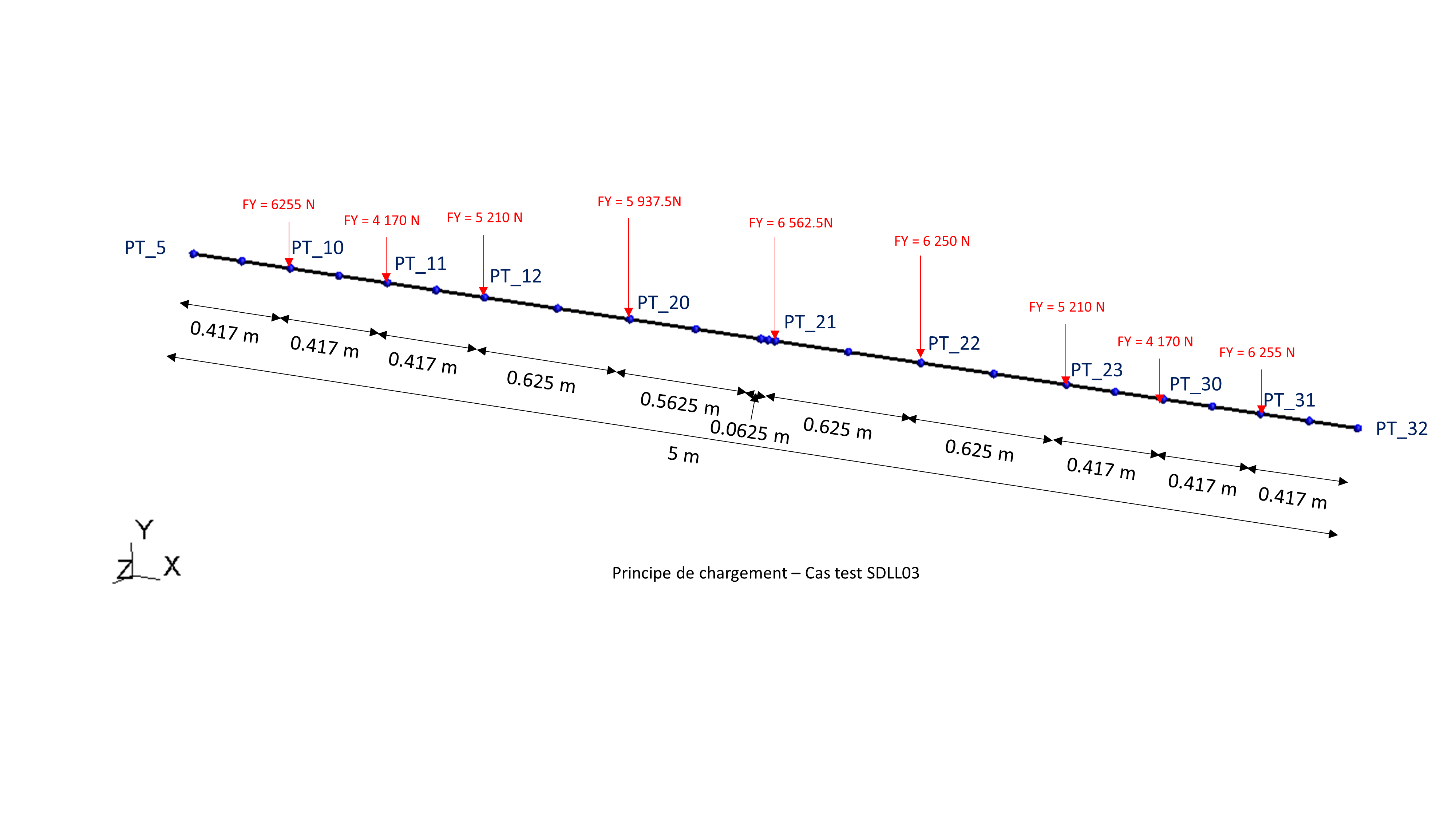1. Reference problem#
1.1. Loading#
Initially, the load was modelled by a time history of a uniform load q1 = 10,000 N/m (as below).

Figure 1.1-1
In code-aster, this is therefore converted into nodal loads, shown below.

Figure 1.1-2
The magnitude of the nodal forces varies as a function of time as shown in Figure 1.1-1 with q1 = 1, t1 = 2.38e-2 (s) and t2 = 5.95e-2 (s).
1.2. Liaisons#
Embedding PT_5 (DX=DY=DZ= DRX = = DRY = DRZ =0)
Embedding PT_32 (DX=DY=DZ= DRX = = DRY = DRZ =0)
1.3. Geometry#
Beam PT_5 to PT_12 and PT_23 to PT_32
Characteristics |
Value |
Unit |
Inertia |
19.43*106 |
mm4 |
Area |
2 872 |
mm² |
Table 1.3-1
Beam PT_12 to PT_23
Characteristics |
Value |
Unit |
Inertia |
83.56*106 |
mm4 |
Area |
5 356 |
mm² |
Table 1.3-2
1.4. Material properties#
Beam PT_5 to PT_12 and PT_23 to PT_32
Characteristics |
Value |
Unit |
Young’s module |
200,000 |
|
Poisson’s ratio |
0.30 |
[-] |
Density |
7,800 |
kg/m3 |
Table 1.4-1
Beam PT_12 to PT_23
Characteristics |
Value |
Unit |
Young’s module |
200,000 |
|
Poisson’s ratio |
0.30 |
[-] |
Density |
7,916 |
kg/m3 |
Table 1.4-2
1.5. Bibliographical references#
VPCS: Guide to the validation of structural calculation software packages: « test SDLL03 -89 », SFM, AFNOR technique.